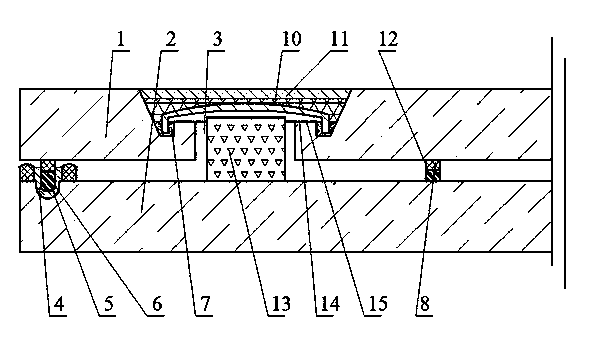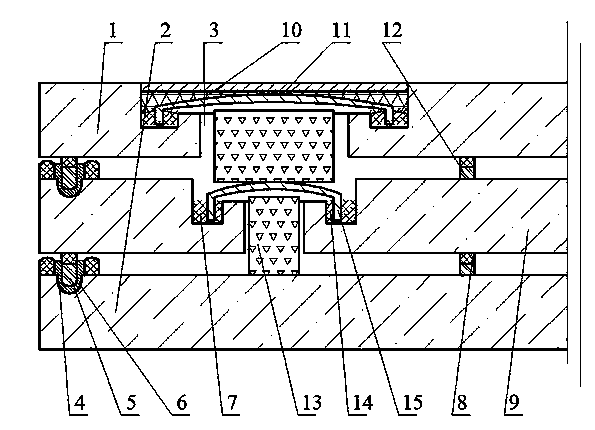Flat tempered vacuum glass edge-sealed with sealing bars and sealing grooves and having getter and manufacturing method thereof
A technology for vacuum glass and sealing strip grooves, which is applied in glass manufacturing equipment, glass production, glass molding, etc., and can solve problems such as small space, difficulty in placing getters, complicated encapsulation and placement of getters, etc.
- Summary
- Abstract
- Description
- Claims
- Application Information
AI Technical Summary
Problems solved by technology
Method used
Image
Examples
Embodiment 1
[0068] Embodiment 1: see figure 1 The vacuum glass consists of upper glass 1 and lower glass 2. The two pieces of glass are tempered glass or half-tempered glass, one of which is low-emissivity glass. The production method is as follows: First, cut the required size according to the shape and size of the vacuum glass to be produced. A piece of flat glass and a piece of low-emissivity glass, the low-emissivity glass is selected as the lower glass 2, a through hole is drilled at the corner of the upper glass 1 to be the air inlet 3, and a hollow drill is used to make an air outlet 3 on the upper surface of the upper glass 1. A U-shaped sealing groove 14 with concentric air ports, the inner side of the sealing groove 14 is lower than the upper surface of the upper glass 1, and the metal paste is painted in the sealing groove 14; a sealing cover is made according to the size of the sealing groove 4 15. The edge of the sealing cover 15 can be inserted into the sealing groove 14. Th...
Embodiment 2
[0069] Example 2: see figure 2, the vacuum glass is composed of upper glass 1, middle glass 9 and lower glass 2, at least the upper and lower glass of the three pieces of glass are tempered glass or semi-tempered glass, wherein the lower glass 2 or\ and middle glass 9 are also low-emissivity glass, which The production method is as follows: First, cut three pieces of flat glass according to the shape and size of the vacuum glass to be produced, and drill a through hole on the upper glass 1 and the middle glass 9 respectively to form the air inlet 3, wherein the upper glass 1 The through hole is larger than the through hole on the middle glass 9. On the upper surface of the middle glass 9 and the upper glass 1, a hollow drill is used to make a U-shaped sealing groove 14 concentric with the air inlet, and the inner side of the sealing groove 14 is low. On the upper surface of the intermediate glass 9 and the upper glass 1; each make a sealing cover 15 according to the size of t...
PUM
 Login to View More
Login to View More Abstract
Description
Claims
Application Information
 Login to View More
Login to View More - R&D
- Intellectual Property
- Life Sciences
- Materials
- Tech Scout
- Unparalleled Data Quality
- Higher Quality Content
- 60% Fewer Hallucinations
Browse by: Latest US Patents, China's latest patents, Technical Efficacy Thesaurus, Application Domain, Technology Topic, Popular Technical Reports.
© 2025 PatSnap. All rights reserved.Legal|Privacy policy|Modern Slavery Act Transparency Statement|Sitemap|About US| Contact US: help@patsnap.com


